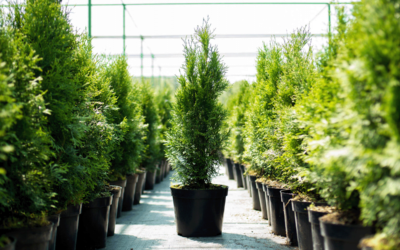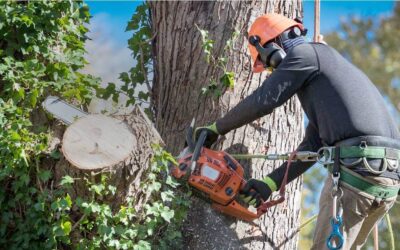One of the things that makes fall so many people’s favorite season is the beautiful colors of autumn foliage. In Colorado, that’s most evident in the yellow of turning aspens contrasted against the deep green of evergreens in the high country.
But aspens don’t do well in most cities, nor do urban lawns usually have evergreen forests, so how do you bring bright fall colors to your landscape? A well-chosen broadleaf tree or two can do the job. And fall is the best time to plant so your tree has plenty of time to grow before putting on a show next autumn.
Most broadleaf trees native to Colorado have leaves that turn a dull yellow or brown in the fall, and while some can be attractive, they lack the fiery beauty that spreads across New England come October. There are, however, several trees that do well in Colorado’s urban spaces and add brilliant reds, oranges, and purples when the cold weather comes. Here a few to consider:
Maples
You don’t have to be Canadian to appreciate the simple beauty of a maple leaf. There’s something warm and nostalgic about its five-fingered symmetry that fairly shouts, “Fall is here” when the days grow short and the nights turn chilly. Fortunately, there are several varieties that do well in Colorado’s wide-ranging climate, so you should be able to find a tree that’s perfect for you.
- Canyon Maple – also known as the Bigtooth Maple, this compact, slow grower tops out at around 20 feet and is perfect for smaller yards. It adapts well to our dry climate and alkaline soils and rewards with bright red or orange leaves in the fall.
- Norway Maple – the Emerald Queen variety of Norway Maple had been widely planted as a shade tree in urban areas. It grows to a height of 40-50 feet with a dense, symmetrical oval crown, and its large turn a brilliant yellow prior to dropping in the fall.
- Hot Wings Maple – tolerant of temperatures down to -40° F and altitudes up to 7,000 feet, this is a small, 15-35-foot tree with leaves that turn brilliant yellow to reddish orange in the fall.
- Eastern Redbud – a small, low-branching tree or shrub its thin, lacy dark branches give it a delicate appearance in winter and its heart-shaped 3-4” leaves have a soft, rounded look before turning a brilliant yellow in the fall.
- Hawthorn – these trees have 2-3” triangular leaves with serrated edges and grow in clusters or spirally on long shoots. They can emerge in spring as reddish-purple in some species, turning dark green in summer and orange, scarlet or purple in fall. They produce showy white flowers in late May or early June, followed by berries that are fed on by birds, rabbits, foxes, and deer. The taller varieties develop a dense oval crown up to 30-40 feet tall.
- Honey Locust – a fast growing, rounded tree that tops out between 65-100 feet honey locust leaves have 20-30 narrow leaflets alternating on 6-8-inch stalks giving a delicate, lacy look to the tree. They are dark green in summer and turn brilliant yellow in fall.
- Ohio Buckeye – this Midwestern native thrives in Colorado although it only reaches about half its Ohio Valley height of 80 feet. Buckeyes put on a spring show with large yellow flowers, and their 3-6 inch five-fingered oblong leaf clusters turn a brilliant orange in the fall.
- Saucer Magnolia – This French hybrid blooms profusely in the spring with large fragrant pink and white flowers prior to the emergence of. It bears an elongated fruit that attracts wildlife and birds often use its branches for nesting. Its thick, smooth 3-6” green leaves turn a reddish brown before dropping in the fall, leaving a thick interwoven branch structure for winter interest.
- Serviceberry – with about 20 different species, serviceberries grow from six to twenty feet tall and produce showy, fragrant white flowers in early spring similar to lilac bushes. They have 1-4-inch leaves that are a medium green in summer and turn brilliant shades of orange, red, or yellow before dropping in the fall, depending on the variety.
Learn More
You can learn more about these and the dozens of tree species that thrive in Colorado’s challenging climates on Donovan Arborists’ Treeology blog. It’s packed with valuable information about landscaping and the challenges particular to the Rocky Mountain West.
And if you need help with fall planting or other chores, Donovan Arborists offers planting, pruning, and shearing services as well as a complete landscape maintenance package for property in the Denver area.
We’re always happy to give free estimates to homeowners and property managers for any services they may need.



